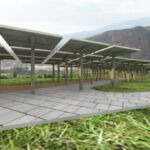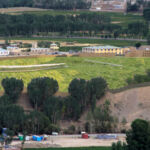Harmony & Sustainability: Bamiyan Cultural Centre's Architectural Design
Project's Summary
The design of the Bamiyan Cultural Centre, created by the architectural studio Yereem & Associates, focused on two main ideas: environmental sustainability and the promotion of cultural harmony through spatial design. In order to achieve these goals, various measures were implemented throughout the design process.
One of the key aspects of sustainability in the centre's design was the utilization of natural daylight. The roof of the building was specifically designed to take advantage of sun angles, allowing ample daylight to filter into the interior spaces. This not only reduced the need for artificial lighting but also created a more pleasant and inviting atmosphere for visitors. Additionally, the choice of building materials was carefully considered, with a preference for locally available resources such as bricks, mud, and cement. This not only reduced transportation costs but also promoted the use of materials that were abundant in the surrounding area.
Another important feature of the Bamiyan Cultural Centre's design was the inclusion of a courtyard. Positioned before visitors reached their intended destination within the centre, whether it be an exhibition space, research area, classroom, or office, the courtyard served multiple purposes. Firstly, it allowed for better ventilation throughout the building, enhancing the overall comfort of the visitors. Secondly, it acted as a space for people to gather and interact with one another, fostering a sense of community and cultural exchange.
The centre also incorporated solar panels as a means of generating electricity. These panels served a dual purpose, not only providing renewable energy for the cultural centre itself but also acting as a landscape feature. They were strategically placed in areas such as the parking lot, drop-off area near the building entrance, and path to the market place, providing shade for visitors and reducing the reliance on traditional energy sources. Given the site's location in a hot and arid climate, where it receives more than six hours of direct sunlight per day, the solar panels were able to generate enough electricity to meet the cultural centre's needs as well as the energy requirements of the local community.
In conclusion, the Bamiyan Cultural Centre, designed by Yereem & Associates, successfully incorporated both environmental sustainability and cultural harmony into its design. Through the use of natural daylight, locally sourced materials, a courtyard for ventilation and community interaction, and solar panels for electricity generation, the centre not only minimizes its environmental impact but also provides a welcoming and inclusive space for visitors to engage with the local culture. This project serves as a shining example of how thoughtful design can create a harmonious blend of functionality, environmental responsibility, and cultural appreciation.
Read also about the 146 Coffee: Innovative Pop-Up Café in Shipping Container project



